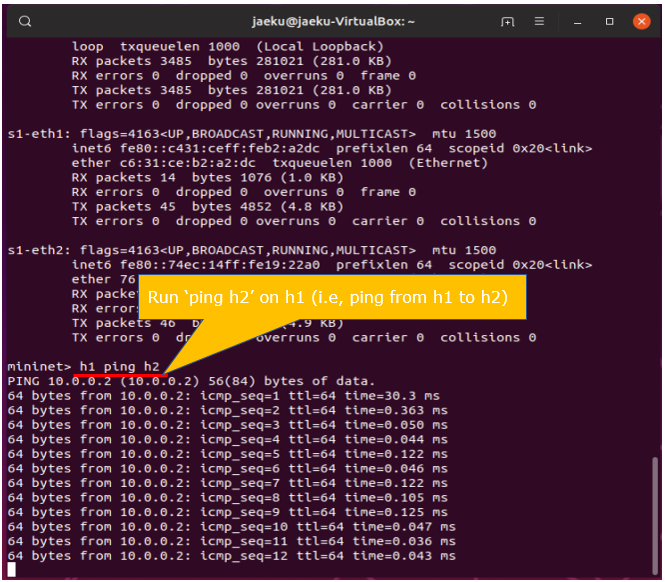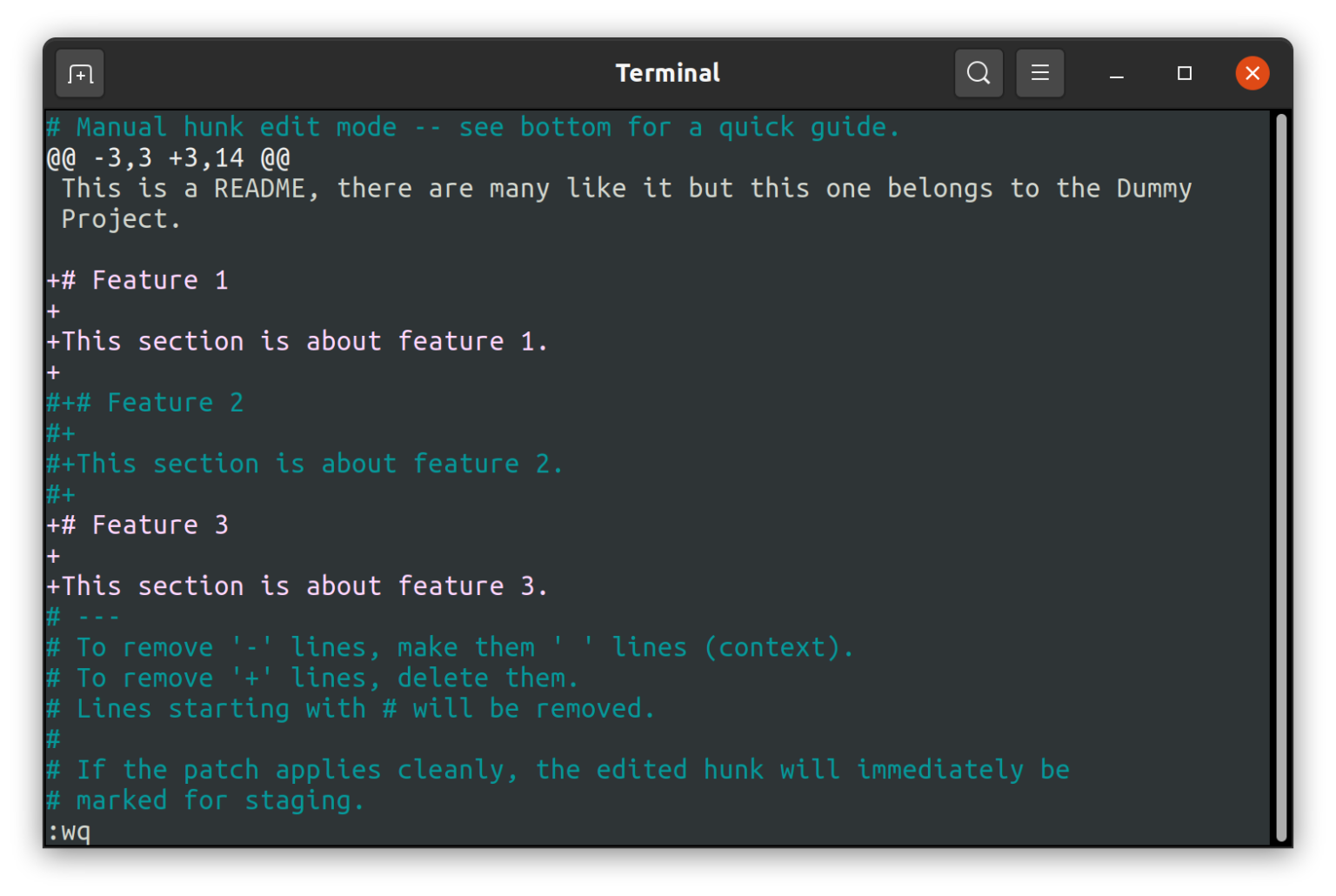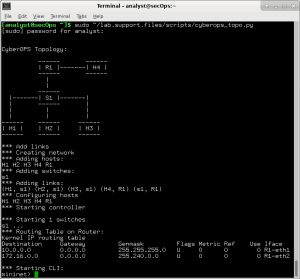

Network designs that run in Mininet can easily be transferred to

Programmable using the OpenFlow protocol. You can customize packet forwarding: Mininet's switches are You can run real programs: anything that runs on Linux is availableįor you to run, from web servers to TCP window monitoring tools to Internet-like topologies, the Stanford backbone, a data center, or You can create custom topologies: a single switch, larger This means that your run-edit-debug loop can be very quick. It's fast - starting up a simple network takes just a few seconds.
#Mininet wireshark command line mode code
That resembles a hardware network, or a hardware network that resemblesĪ Mininet network, and to run the same binary code and applications on

It is usually possible to create a Mininet network Hardware – and for the most part their behavior is similar to discrete
#Mininet wireshark command line mode software
In short, Mininet's virtual hosts, switches, links, and controllersĪre the real thing – they are just created using software rather than Performance should match that of two (slower) native machines. Iperf client and server, communicate through Mininet, the measured Middlebox, with a given amount of queueing. Processed by what looks like a real Ethernet switch, router, or The programs you run can send packets through what seems like a realĮthernet interface, with a given link speed and delay. (including anything that is installed on the underlying Linux system.) Sshd and bridge the network to your host) and run arbitrary programs A Mininet hostīehaves just like a real machine you can ssh into it (if you start up Network, running the same kernel, system, and user code. Lightweight virtualization to make a single system look like a complete Switches, routers, and links on a single Linux kernel. Mininet is a network emulator, or perhaps more precisely a

A welding machine prototype with capacity up to 400 amperes is built. To achieve constant arc length control, a triple closed loop control model including stick-out compensation, arc regulation and current control is presented to make arc length constant and welding stable during the whole process. As for the control of the DC/DC converter, peak current control is taken to suppress the over current across switches. inner loop of current regulation for wire feeding motor is proposed. Both control of the feeder and converter are implemented with each separated digital signal processor(DSP).To improve the stability performance and dynamic response of wire feeder, a digital control strategy consisting of outer loop of rotating speed regulation and. In this paper, development of a switch mode pulsed MIG welding machine composed of a wire feeder and DC/DC converter is described. As drawbacks, there's the considerable performance penalty caused by the emulation and the risk of executing harmful random instructions. The technique doesn't require the source code of the protected programs, and the user can select which programs to protect. However, the random instructions, generated by the unscrambling routine when working on the attack code, may turn to be valid and harmful instructions, but experimental results show that the probability is very low, even in such dense instruction set as the x86. Several attacks are tested against programs running over the prototype, and all of them are disrupted by the emulator. Injected binary code attacks are disrupted due to the instruction set incompatibility. RISE protects running programs individually using an unique random key for each program execution, scrambling code in the load time and. This work is a summary of the concepts, implementation description and results presented in (BAP+03) by Barrantes et al., where a prototype of a Randomized Instruction Set Emulator (RISE) is constructed modifying the Valgrind x86-to-x86 binary translator.


 0 kommentar(er)
0 kommentar(er)
